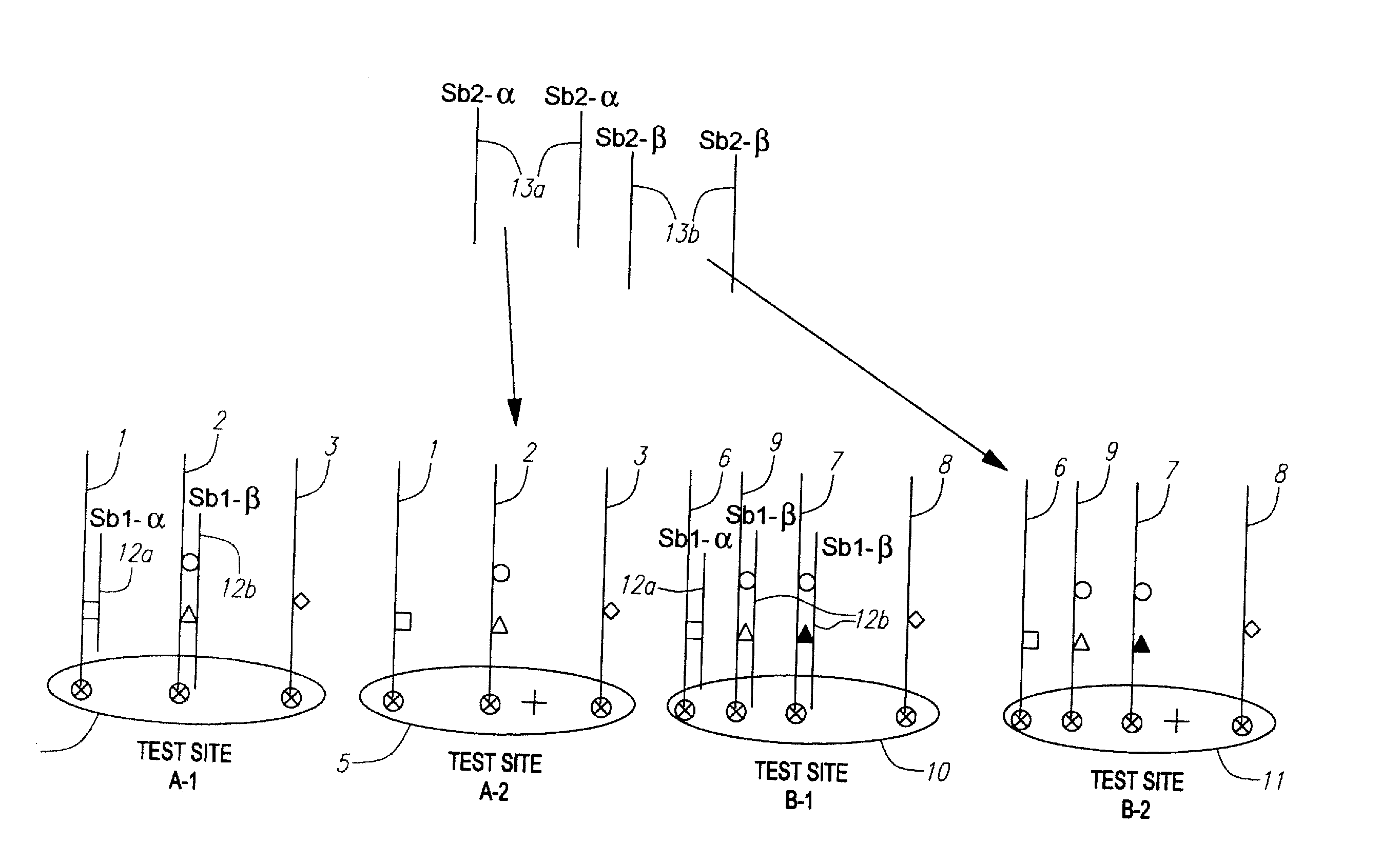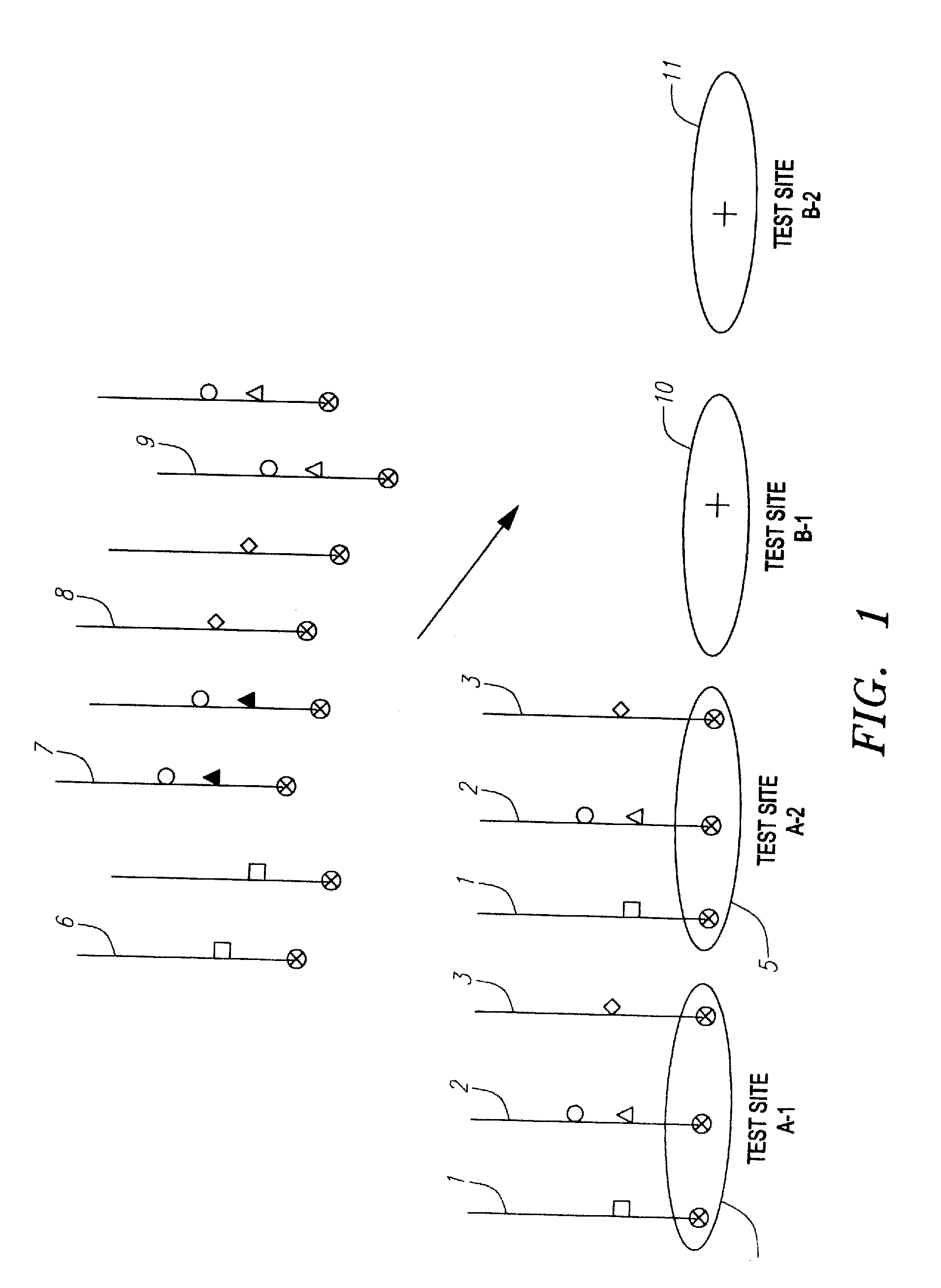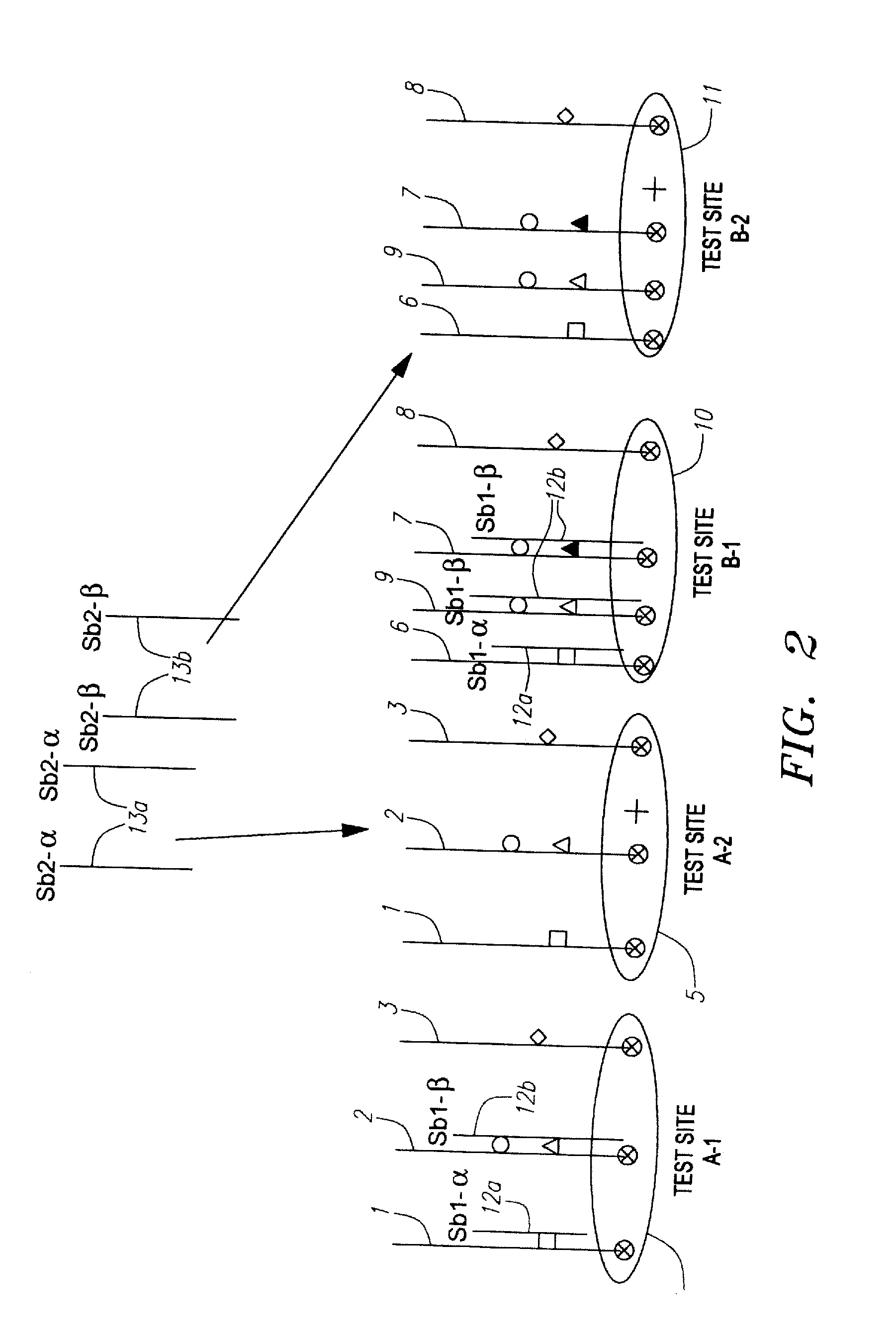Methods and apparatus for screening and detecting multiple genetic mutations
a technology of genetic mutations and methods, applied in the direction of biochemistry apparatus and processes, material analysis, libraries, etc., can solve the problems of time-consuming and expensive testing of subtle genetic alterations, and the instrumentation and testing methods cannot be performed in the research environment, so as to facilitate rapid and automated performance of assays
- Summary
- Abstract
- Description
- Claims
- Application Information
AI Technical Summary
Benefits of technology
Problems solved by technology
Method used
Image
Examples
example 1
[0139]The following is a simplified example of the invention showing an assay of a genetic sample for 2 patients, and demonstrating the principle of the invention with 3 amplicons, 2 test sites, and blockers, discriminators, and universal reporters for only 4 polymorphisms.
[0140]Referring to FIG. 1, the example shows amplicons from a single patient 1, 2, 3, localized at test sites A-1 4 and A-2 5. The polymorphism interrogated is represented by (wild-type) and closed (mutant) circles, triangles, squares, and diamonds. In FIG. 1, the amplicons 1, 2, 3 from a first patient are already localized at test sites A-1 4 and A-2 5 while the amplicons of a second patient 6, 7, 8, 9, are in the process of being addressed to test sites B-1 10 and B-2 11. In this example, the patient whose amplicons are addressed at test sites at B-1 10 and B-2 11 is heterozygous for the mutation represented by the triangle.
[0141]Referring to FIG. 2, groups of blockers are sequentially electronically addressed t...
example 2
[0147]Using the system, apparatus, reagents and methods described above, Applicants detected the cystic fibrosis-related mutations set forth in Table 2 below. These mutations are those that the American College of Gynecologists (ACOG) has recommended for testing in couples planning to have children.
TABLE 2CF Mutation PanelMutationRelevant ReferencesG 85 ETsui 6,001,588R 117 H(1990) Dean, M, Cell 61: 863-870I 148 T(1994) Bozon D, Hum. Mut. 3: 330-332R 334 W(1991) Gasparini P, Genomics, 10: 193-200R 347 P(1990) Dean, M, Cell 61: 863-870A 455 ETsui 6,001,588ΔF 508Tsui 5,776,677ΔI 507Tsui 6,001,588G 542 XTsui 6,001,588G 551 DCutting 5,407,796R 553 XCutting 5,407,796R 560 TTsui 6,001,588R 1162 X(1991) Gasparini P, Genomics, 10: 193-200W 1282 X(1990) Vidaud M, Hum Genet., 85: 446-449N 1303 K(1991) Osborne L, Am J. Hum Genet. 48: 608-612621 + 1G→TTsui 6,001,588711 + 1G→TTsui 6,001,5881078 delT(1992) Claustres M Genomics, 13: 907-9081717 − 1G→ATsui 6,001,5881898 + 1G→A(1990) Guillermit H Hu...
PUM
| Property | Measurement | Unit |
|---|---|---|
| Tm | aaaaa | aaaaa |
| melting temperature | aaaaa | aaaaa |
| melting temperature | aaaaa | aaaaa |
Abstract
Description
Claims
Application Information
 Login to View More
Login to View More - R&D
- Intellectual Property
- Life Sciences
- Materials
- Tech Scout
- Unparalleled Data Quality
- Higher Quality Content
- 60% Fewer Hallucinations
Browse by: Latest US Patents, China's latest patents, Technical Efficacy Thesaurus, Application Domain, Technology Topic, Popular Technical Reports.
© 2025 PatSnap. All rights reserved.Legal|Privacy policy|Modern Slavery Act Transparency Statement|Sitemap|About US| Contact US: help@patsnap.com



